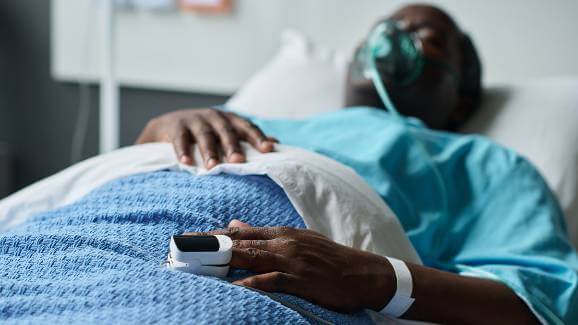Study Suggests Dark Skin Skews Oximeter Sleep Apnea Results
Editors carefully fact-check all Consumer Notice, LLC content for accuracy and quality.
Consumer Notice, LLC has a stringent fact-checking process. It starts with our strict sourcing guidelines.
We only gather information from credible sources. This includes peer-reviewed medical journals, reputable media outlets, government reports, court records and interviews with qualified experts.

According to research presented at the American Thoracic Society Conference in May, standardized testing for obstructive sleep apnea may be underestimating the seriousness of the condition in Black patients and others with dark skin.
Sleep apnea is a disorder that causes several interruptions in breathing while a person is sleeping. If left untreated, it could lead to a number of health problems, such as Type 2 diabetes, stroke and heart issues.
During overnight sleep studies of nearly 2,000 patients of different races and ethnicities, data found that the oxygen saturation in Black participants was underestimated compared to white participants. The study used oximeters that are clipped to the fingertip to measure blood oxygen levels after every pause in breathing. Oxygen saturation is a common criteria used to diagnose sleep apnea.
Ali Azarbarzin, an assistant professor at Harvard Medical School who was involved with the study, said it’s unclear if this will lead to underestimating the severity of sleep apnea in Black patients or others with dark skin.
“Nonetheless, these findings highlight the need to rigorously test the accuracy of oximeters across diverse populations and also to consider whether factors other than the oximeter’s characteristics could explain differences in oxygen patterns with breathing pauses,” Azarbarzin said.
Oximeter Research Conducted During Pandemic
The U.S. Food and Drug Administration began looking into the use of oximeters and the potential racial biases associated with them during the COVID-19 pandemic in 2022. The FDA’s Medical Devices Advisory Committee also met to consider adding a boxed warning on oximeters noting that readings may vary depending on the skin color of the patient.
Oximeters are able to sense the color of a patient’s blood by sending a light through the fingertip to a sensor on the other side. Bright red blood is considered highly oxygenated, and blue or purple blood is less oxygenated. If the device isn’t calibrated correctly for dark skin tones, it could alter the results and create inaccurate readings.
Azarbarzin said additional research is needed to fully understand the impact of oximeters and their accuracy for all ethnicities to effectively treat sleep apnea in every patient.
Sleep Apnea Facts
Approximately 30 million people in the U.S. have sleep apnea, according to the American Academy of Sleep Medicine. Some of the more common warning signs of sleep apnea include loud snoring or gasping while asleep, feeling tired after a full night’s sleep, headaches in the morning or trouble staying asleep.
Sleep apnea can be caused by a number of issues. Some of the most common causes include:
- Genetic syndromes (affecting the shape of the face or skull)
- Heart or kidney failure
- Hormone disorders
- Large tonsils
- Neuromuscular conditions
- Obesity
- Premature birth
Some people can control potential risk factors for sleep apnea by losing weight or making lifestyle changes. Other factors such as age or genetics can’t be controlled. It’s important to speak with a doctor about ways to prevent sleep apnea.
If lifestyle changes aren’t working, there are other options. Doctors may recommend implants, oral devices or breathing devices like a continuous positive airway pressure machine, also called a CPAP. Philips Respironics has had to recall a number of its CPAP, BiPAP and ventilator machines due to degrading sound abatement foam in the devices. Philips has faced multiple CPAP lawsuits over the defects, which may increase the risk of cancer and respiratory issues.